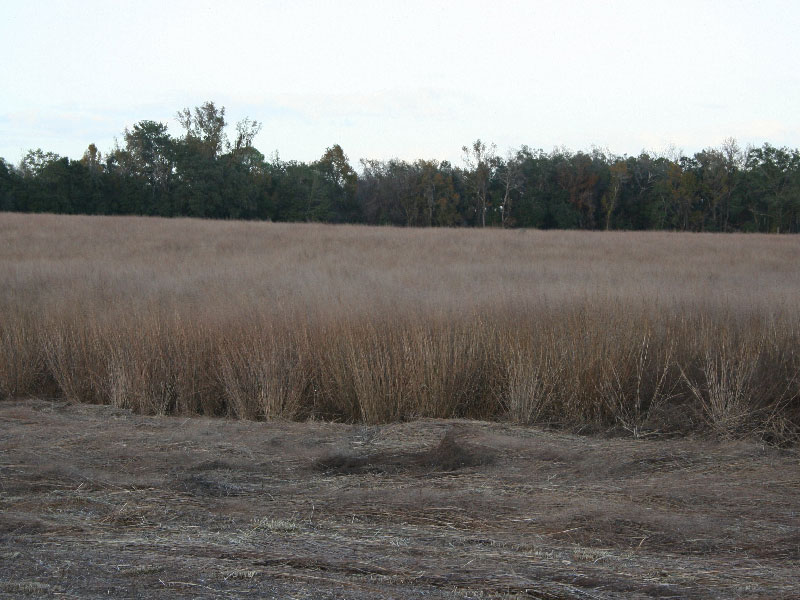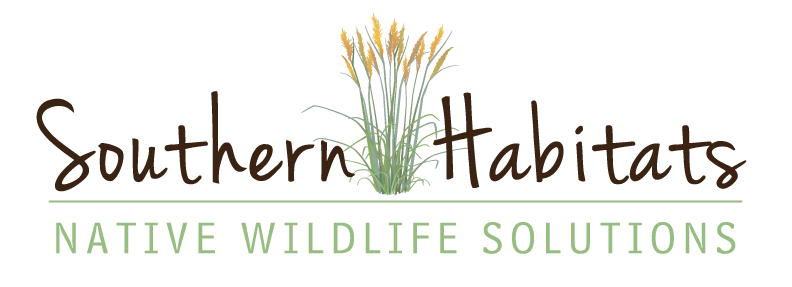Shaping a property’s native food and cover structure drastically enhances the hunting experience. Our goal is the restoration of native plants that occurred historically on the site, but in a strategic fashion. In addition to the southern native seeds and plants we grow, we also use innovative techniques of releasing, expanding, and distributing the desirable native plants already growing on your property.
While we love the sport of hunting, we understand that game animals are part of a larger system that impacts everyone. Native grasses are multifunctional, and in addition to habitat, provide erosion control and sediment control and fine fuels for fire continuity. Native legumes and forbs provide important food for birds and mammals and many are also very important to pollinators. These bees, butterflies, and other insects pollinate our food crops, making pollinator habitats a major conservation priority. Our diverse Southeastern habitats are linked together in a chain of life to which we are all connected.
Deer Hunters
Going Native for Deer
The use of selected native species to recreate “natural scenes” for cover and offer a consistent source of summer protein is a great way to keep deer using your plots year round. Certain native grasses, forbs, legumes, trees, and shrubs are very effective.
Currently on the market is a wide variety of cattle forages that are used in food plots such as various clovers, cereal grains, brassicas and a number of other greens. They are mostly annuals but some are short-lived perennials and most are very high in nutrition and palatibility. If you have good soil or have it amended properly and have a good system of getting these crops planted and growing successfully every year then you are lucky. We are not trying to discourage anyone from using these products. We use them too. We just want to help people recognize that there are perennial native plants that are much more forgiving about soil quality, pH, and low rainfall. In fact they thrive in that environment. That is their “briar-patch”! It’s all about choosing the right ones. These plants keep making high-protein browse throughout the growing season, whether or not you have success with your annual food plot planting efforts. Hands down, Sweet Tea is the best one of all. If you don’t mind doing a little experimentation to determine where it performs best on your specific site you will be rewarded in a big way.
Here is a link to Joe’s article in Georgia Outdoor News about native summer food plots
Regarding the use of cover strips within the food plot to reduce alertness and increase daytime usage of food plots, here is Joe’s article in Quality Whitetails about this subject.
Upland Birds
 Quail Cover:
Quail Cover:
Native grasses are preferred for the bobwhite quail’s nesting cover and provide the base for real quail hunting. We bring 25 years of experience in managing groundcover for quail. We can help you turn your weedy farm fields into an upland wing shooter’s paradise.
We can equip you with the knowledge, seed, and plants you need to establish and maintain the three components of quail habitat:
- Nesting Cover: Native grasses with legumes like southern native Partridge Pea, Ticktrefoil and Lespedeza
- Brood Cover: Strips of herbaceous plants like Ragweed to attract insects for chicks
- Escape Cover: Patches or thickets of dense woody shrubs and low-growing trees like plum, persimmon and blueberry.
Turkey Cover:
Turkeys are ground nesters and native grasses are preferred turkey nesting cover.
In terms of what turkeys eat, a shorter list may be what they don’t eat. Strategically placed screens, aisles and corridors of native grass cover are excellent for gobbler ambush.
Dove Fields:
Panicum virgatum, or switchgrass, is a native grass in the millet family. Adding narrow strips of switchgrass across your dove field is a huge benefit. Not only will it shower adjacent bare ground with tiny seeds that doves go crazy over, but it makes excellent hunter concealment cover.
In addition, it requires no fertilizer, can be burned after the season, and will come back every year from the roots.
We also have other species of Panicums that can be added in other strips to extend the seed drop. Some are lower growing so they can be planted in tighter strips without making shot birds hard to find.
Bare Root Switchgrass
 Our most versatile native grass is Panicum virgatum, better known as Switchgrass. This amazing bunchgrass is widely used as a landscape plant but is also great for wildlife, providing travel and bedding cover for deer, thermal cover for deer fawns, nesting cover for quail and turkey, and the tiny seeds are preferred by doves. By growing up to 7′ tall and standing erect throughout winter, it also makes the best natural privacy screen found anywhere.
Our most versatile native grass is Panicum virgatum, better known as Switchgrass. This amazing bunchgrass is widely used as a landscape plant but is also great for wildlife, providing travel and bedding cover for deer, thermal cover for deer fawns, nesting cover for quail and turkey, and the tiny seeds are preferred by doves. By growing up to 7′ tall and standing erect throughout winter, it also makes the best natural privacy screen found anywhere.
A very deep rooted and drought-tolerant perennial, switchgrasses make excellent plants for erosion control. As a widely planted and accepted native it does not aggressively spread outside of the planted area.
Switchgrass is extremely tolerant of transplanting. This plant can be dug, divided, and easily and successfully re-established.
When trimmed into uniform “crowns”, the plants maintain uniformity as they mature. This enables us to establish plants that are equivalent to five to seven gallon containerized plants for less than 1/10th of the cost. This is without considering the savings in shipping, handling, and planting as a result of having no bulky pots of soil to worry about. The plants are dug; the roots treated with a wetting agent and bagged 50 per bag for shipping.
In the south we recommend this planting be done in the late winter and very early spring. If planted per our specifications we guarantee survival of these plants.
Practical applications for bare root switchgrasses include:
- Native Landscapes
- Deer Bedding and Travel Corridors
- Slope Stabilization
- Natural Privacy Screens
- Riparian Buffers
- Roadside Beautification
- Dove Field Strips

